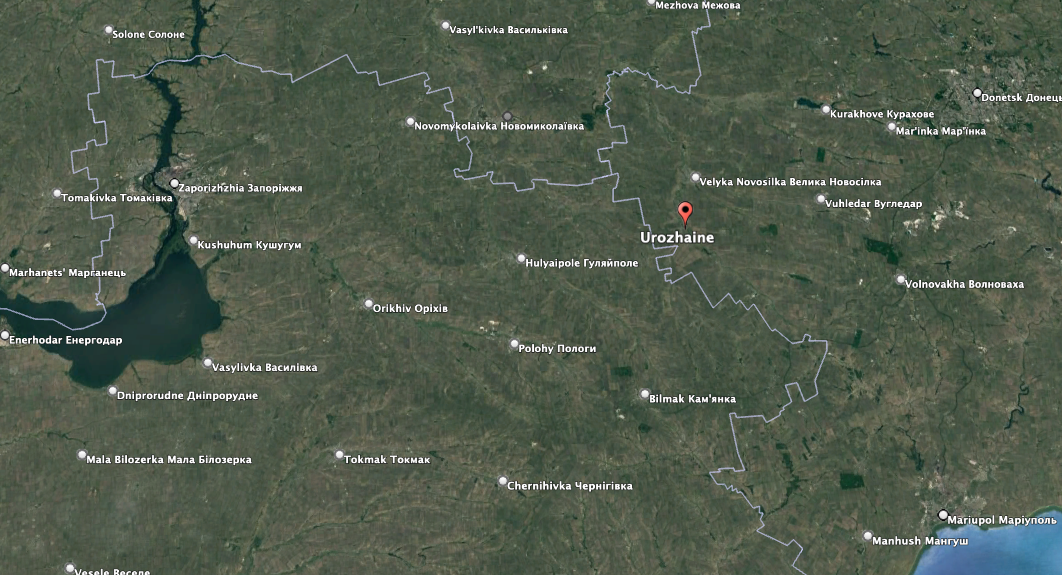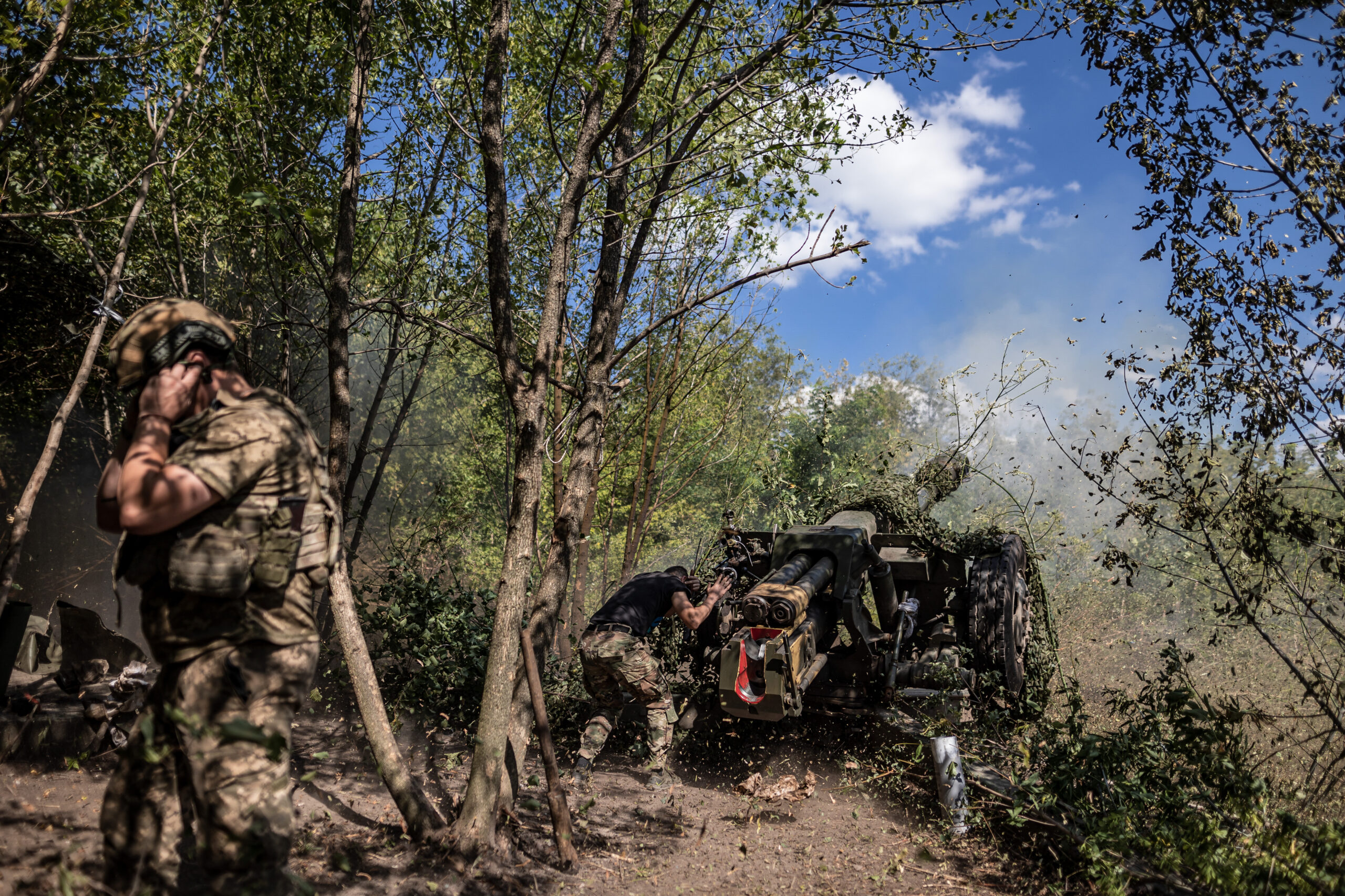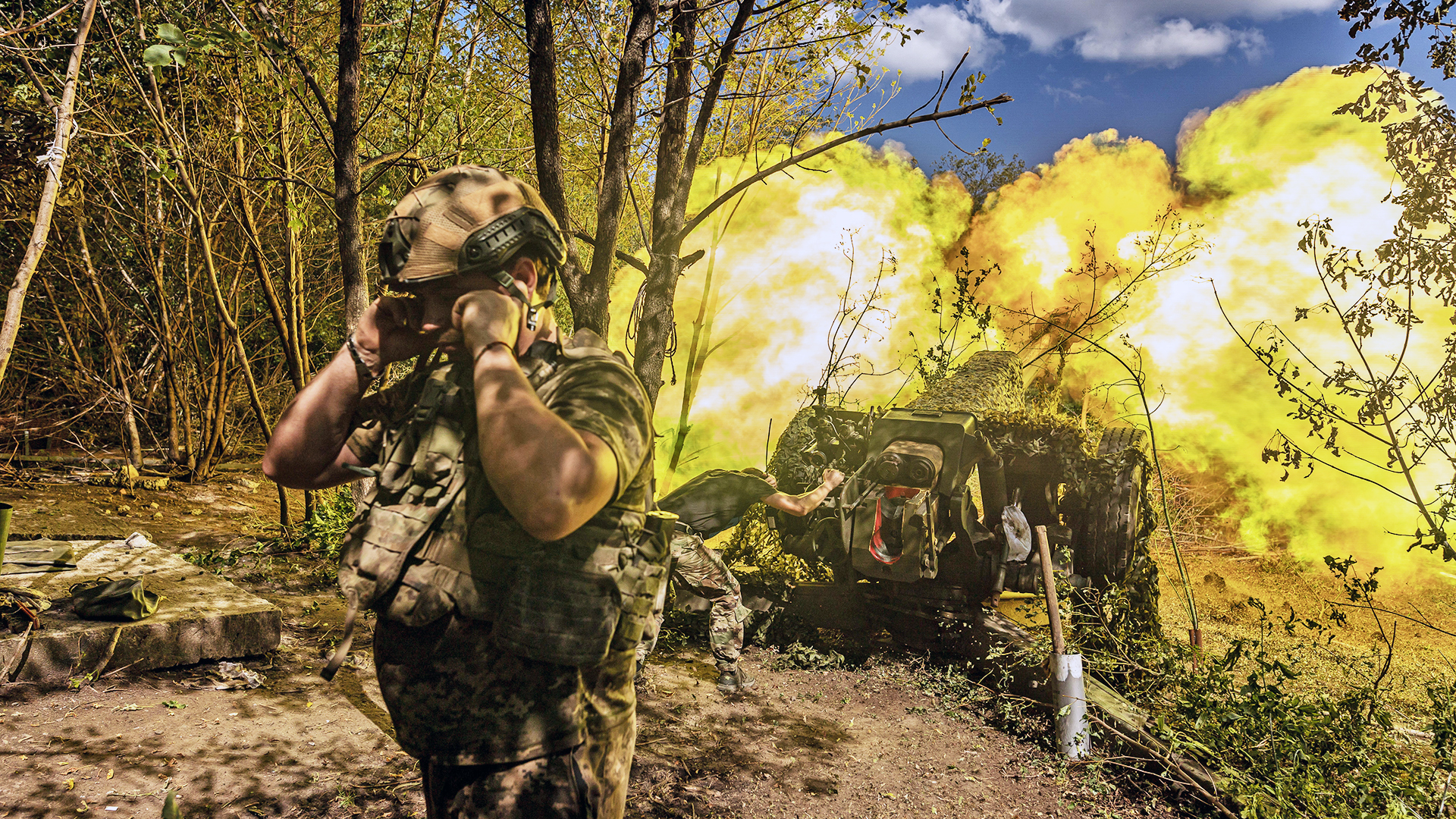Given the slow pace of Ukraine’s ongoing counteroffensive, some Western military strategists and policymakers are beginning consider a spring offensive in 2024, The Wall Street Journal reported.
“The shift reflects a deepening appreciation that, barring a major breakthrough, Ukraine’s fight to eject Russia’s invasion forces is likely to take a long time,” the Journal reported.
Ukraine has been making incremental gains, especially in towns along the Mokri Yaly River in Donetsk Oblast.
“In the direction of Urozhayne, further south and southeast of Staromayorske of the Donetsk region, [Ukrainian troops] were successful, they are taking hold of the achieved boundaries,” Ukrainian Deputy Defense Minister Hanna Maliar said on her Telegram channel Monday.

That advance is less than a mile from Staromayorsk, which was liberated about nearly three weeks ago.
The advances have come at a tremendous cost in personnel and equipment and any hopes from the White House that Ukraine will soon regain the territory Russia still holds in the Donbas, Zaporizhzhia and all of Crimea may be waning.
“I do think there’s a realization in the administration that Ukraine’s not going to be regaining all its territory any time soon,” Ivo Daalder, President Barack Obama’s former ambassador to NATO, told the publication.
“Kyiv’s goal now is for its current offensive to culminate with sufficient gains to show Ukrainian citizens and backers in Washington, Berlin and elsewhere that their support hasn’t been misplaced—and should continue,” the Journal reported. “U.S. and other Western officials have hoped that a significant Ukrainian breakthrough could bruise Russian forces enough to bring President Vladimir Putin to a negotiating table as soon as this winter for serious talks about some kind of settlement. Chances of that happening now appear slim, diplomats say.“

The Biden administration continues to insist that it will back Ukraine for the long haul.
“We will continue to support Ukraine for as long as it takes,” Air Force Brig. Gen. Pat Ryder, the Pentagon’s top spokesman, told reporters Aug. 10.
However, with the U.S. presidential election slated for November, 2024, there are increasing concerns about just how long support for Ukraine will last. Donald Trump, who has suggested he plans to curtail aid to Ukraine, is the Republican front-runner.
Still, many in the GOP still back aid for Ukraine, the Journal noted.
“In votes last month on defense appropriations, five amendments proposed by House Republicans close to Trump that would have cut aid to Ukraine were defeated by wide margins after more than 130 Republicans voted alongside all Democrats in rejecting them.”
“I think that bodes extremely well for support,” said Daalder, the former NATO ambassador.
What this support looks like come next spring remains to be seen. We will continue to closely watch this situation and provide updates when warranted.
Before we head into the latest news from Ukraine, The War Zone readers can catch up on our previous rolling coverage of the war here.
The Latest
Fighting appears to still be going on in the Russian-held section of Kherson Oblast.
New video has emerged reportedly showing Russian troops being attacked by Ukrainian forces near the town of Kozachi Lageri, also known as Cossack Camps. It is an area about two miles south of the Dnipro River, across the smaller Konka River.
The Russian Romanov Telegram channel says that contrary to official information from Moscow, Ukrainian forces are not only hanging on to territory in that area, but they are making gains as well.
The western portion of Kozachi Lageri is still under Ukrainian control, Romanov said Monday. In addition, there was a “breakout” in the bridgehead Ukraine established around the Anotovsky Bridge as well, he claimed. It’s the latest in a situation at that location that has been going on for more than a month.
Three people were injured and several buildings were damaged in the latest Russian attack on Odesa, Oblast Gov. Oleh Kiper said Monday on his Telegram channel.
“The enemy attacked the Odesa region three times during the night, using two waves of attack drones, a total of 15 drones, and eight Kalibr-type sea-based missiles,” he said.
Ukraine claimed all attacks were repelled by Ukrainian air defenses, however a school dormitory and a supermarket were damaged by debris from the incoming drones and missiles that were shot down, Kiper said. Images emerging on social media showed heavy damage and fires.
The Russian Defense Ministry said it used “long-range sea-based precision weapons against the production and storage sites of unmanned boats used by the [Armed Forces of Ukraine] for terrorist attacks. The goal of the attack has been reached. All the assigned targets have been neutralized.”
The Pentagon on Monday announced the first round of aid packages to Ukraine using $6.2 billion in additional funds found through an accounting review earlier this year.
The package, valued at up to $200 billion, includes mine-clearing equipment and additional munitions for the Patriot air defense system, and more Guided Multiple Launch Rocket Systems (GMLRS) munitions for the M142 High Mobility Artillery Rocket Systems, or HIMARS.
In addition, package includes the following capabilities:
- 155mm and 105mm artillery rounds;
- 120mm tank ammunition;
- Tube-Launched, Optically-Tracked, Wire-Guided (TOW) missiles;
- Javelin and other anti-armor systems and rockets;
- 37 tactical vehicles to tow and haul equipment;
- 58 water trailers;
- Over 12 million rounds of small arms ammunition and grenades;
- Demolitions munitions for obstacle clearing; and
- Spare parts, maintenance, and other field equipment.
This is the 44th Presidential Drawdown Authority (PDA) package for Ukraine. That’s funding to pay for items currently in U.S. military stock. To date, the Biden administration has committed more than $43 billion in security assistance since Russia launched its full-on invasion, and more than $46.1 billion in security assistance since Russia’s initial invasion of Ukraine in 2014.

Norwegian arms maker Kongsberg Aerospace and Defense has been awarded a contract worth nearly $71 million to deliver a new mobile short-range anti-drone system to Ukraine, the Norwegian Defense Ministry announced Monday.
The CORTEX Typhon Counter-UAS system is built on Dingo mine-resistant, ambush-protected (MRAP) armor transport vehicles and will include software and hardware from Teledyne Flir and Kongsberg, a Kongsberg Remote Weapon Station (RWS) and the CORTEX Integrated Combat Solution (ICS).
“The delivery of the anti-drone system is financed through the British-led International Fund for Ukraine (IFU) where Norway is a major contributor,” the Norwegian MoD said in its release. The Norwegian government has donated two Dingo MRAPs, the Kongsberg RWS and weapons, it added.
It is unclear how many of the systems will be delivered. Kongsberg declined to provide additional details on how many or when they might be delivered. Ukraine remains in major need of drone and short-range air defenses, especially highly mobile types that can work along the front lines.
The Russian Ministry of Defense ordered a tranche of Tiger-M armored personnel carriers in the “Mad Max” variant with enhanced protection, according to Teller Report, citing the official Russian RIA Novsiti news organization. The updated version is equipped with additional armor plates and has increased protection.
Russia has replaced the more modern gun/missile systems on Gyurza-M class armored artillery patrol boats it captured from Ukraine with Soviet-era crewed anti-aircraft guns, according to @CovertShores. Russia has captured as many as four of the seven such vessels built. This makes some sense considering the threat of loitering munitions and the ability to use the anti-aircraft guns on surface and shore targets too. Maintaining them will also prove easier if Russia had no direct way to support the Ukrainian guns.
Speaking of captured Ukrainian boats, Russia unveiled what it says is a Ukrainian UMS-1000 high speed patrol boat at an exhibit in St. Petersburg. According to the Oryx open-source tracking group, this is the fifth vessel in that class Russia has captured.
New satellite imagery emerged over the weekend showing the ongoing repair work of the railway section of the Kerch Bridge, first damaged in a Ukrainian attack last October. Vladimir Putin’s prized $4 billion span linking Russia with the Crimean peninsula it has occupied since 2014 has been attacked since then as well.
Ukrainian authorities in Kherson Oblast discovered a very unusual modified Russian weapon – what appears to be a FAB-500M-62 bomb mounted on a Tochka-U short-range ballistic missile.
The warhead was found undetonated in a field and was transported to another location to be neutralized, according to the Ukrainian Ministry for Internal Affairs.
Ukraine’s 3rd Separate Assault Brigade released video showing its armor attacking dug-in Russian troops.
The Ukrainian 24th Separate Assault Brigade released video as well, showing its troops engaged in a dismounted battle with Russians on the outskirts of Bakhmut. The video shows the troops firing as they slowly advance past dug-out positions.
An attempted Russian counterattack near Andriivka in Donetsk Oblast reportedly failed to achieve its objective and apparently resulted in the loss of at least three T-90M tanks.
Thanks to being able to clear a path through a minefield using a rocket assisted mine clearing line charge, it wasn’t the end for these Ukrainian armored vehicles. After the mines exploded in a huge fireball, this armor column continued on its course, led by a tank cautiously approaching the area that was cleared.
Sea mines continue to be a threat throughout the Black Sea.
On Monday, an explosion on a seawall in front of the Forum Hotel in the Romanian town of Constanța was suspected to be caused by a drifting sea mine, according to the Romanian ProTV media outlet.
The origin of the mine was unknown. Both Ukraine and Russia have mined that body of water.
No one was injured in that incident, according to ProTV.
And finally, for Ukrainian students, education will soon be about reading, writing and landmines.
Ukraine is so heavily saturated with land mines that classes are being developed to teach safety classes for children, according to the Ukrainian Ministry of Education and Science.
About 30% of its territory is potentially dangerous due to explosive objects, the ministry said. It added that the U.N. Human Rights Monitoring Mission in Ukraine says “mines and other explosive items caused 100 victims among children between Feb. 24, 2022 and July 30, 2023.”
“Unfortunately, now and for a long time in Ukraine will be extremely relevant knowledge and skills in mine security,” said Oxen Lisovyi, Minister of Education and Science of Ukraine. “The task of adults and the entire education system is to provide children with all possible information about how to stay safe. Some teachers are already actively engaged in mine education, but our goal is to cover each school, every class and every child.”
Once this war ends, the job of clearing the unspent munitions and mines, much of which is dispersed on farm land, will be a generational issue, taking many years to accomplish.
That’s it for now. We’ll update this story when there’s more news to report about Ukraine.
Contact the author: howard@thewarzone.com
